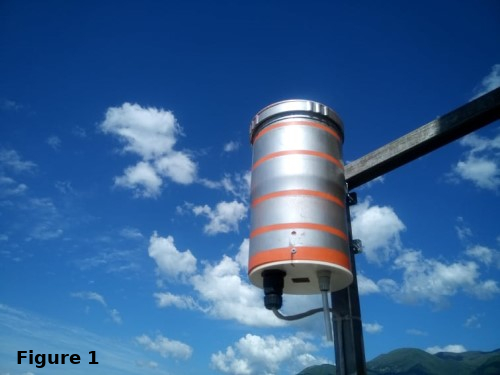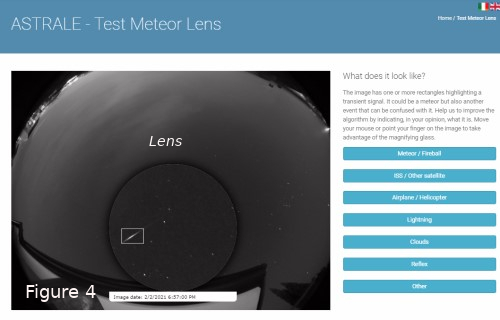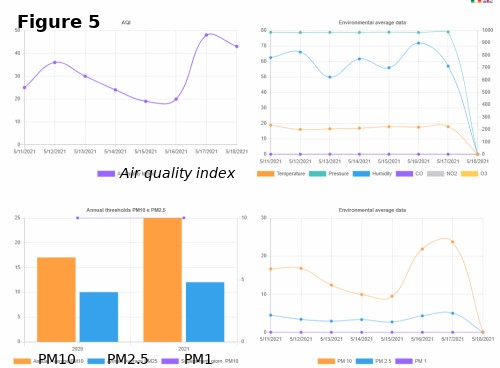ASTRALE: a citizen-driven project for air quality and all-sky monitoring
- 1Associazione AstronomiAmo, via Pieve Fosciana 71B - 00146, Rome, Italy
- 2INAF - Osservatorio Astronomico di Brera, Via Brera 28 - 20121 Milano, Italy
- 3INAF - Osservatorio Astronomico di Padova, Vicolo dell'Osservatorio 5 - 35122 Padova, Italy
Our team is part of the Italian non-profit association AstronomiAmo (https://www.astronomiamo.it/Home), which aims at disseminating astronomy and promoting respect for the environment. The All-Sky TRacking, ALerts and Environment (ASTRALE) project merges both purposes, providing a beautiful view of the night sky, an automatic detection of meteors and an evaluation of the air quality index.
Specifically, ASTRALE (https://astrale.astronomiamo.it/) consists of several devices installed across Italy, which collect data in the form of images or numbers, make a first processing and send them to a central server for storage, analysis and reporting. Each peripheral device (see Figure 1) comes with two installation possibilities:
- ASTRALE Meteor: for those who have a good sky and visibility in all directions: the system is equipped with a webcam for the sky and sensors for the air.
- ASTRALE Air: for those who lack a good sky, due to light pollution and / or visibility, but wish to keep under control the quality of the air they breathe.

What makes ASTRALE unique?
- Automatic detection system: An automatic analysis tool has been developed to identify each transient event. To date, nearly 2000 events have been visually inspected and classified by each volunteer citizen. This amount of data is feeding a machine-learning algorithm that will soon provide a real-time classification of each image. Citizen science is the driving engine to make this ambitious goal possible.
- Low-cost: As a non-profit association, we are fully committed to keep the cost as low as possible, while ensuring a high-quality performance. The expected cost for ASTRALE Meteor is 350 € maximum, while for ASTRALE Air it is about 180 €. This cost simply matches the reimbursement for all hardware components purchased from the market. Each device is then assembled for free by our team experts. No earning is present, neither at personal nor at association level.
- User-friendly: our system can be distributed across Europe and easily installed at home, with no need for maintenance. The only requirements are Internet connection, a socket and an outdoor space. Our team provides full-time assistance to the user.
- Interdisciplinary: this project has blossomed from the close interaction between amateur astronomers, professionals, outreach providers, who are all part of AstronomiAmo. The ASTRALE project encompasses complementary fields of expertise, such as astronomy, environmental science, software engineering, science communication and citizen science. For this reason, ASTRALE aims at engaging the widest possible audience, driven by a common passion for science and environmental awareness.
How does it work?
Images are captured with a Raspberry HQ Cam with a 12.3 Mpixel Sony IMX477 and a CS-mount with a 2.5mm fisheye lens. A dew heater is used to keep the lens and the dome free of moisture. The camera is coupled with a Raspberry PI4 2GB single board computer with a Debian based Linux distribution. The control software is developed in Python. Temperature, pressure and humidity are measured by an I2C BME680, while a PMS5003 is used to measure particulate matter (PM1, PM2.5, PM10). The device is completed by the ozone MQ131 sensor and the MICS6814, a MEME sensor that can detect CO, NO2 and NH3. The air quality index (AQI) is then computed as the highest among the above concentration indices, where each can be measured on a daily or hour-moving average.
Our popular participation platform Meteor Lens is inspired by the fantastic project of "Zooniverse", a worldwide platform for citizen science open to volunteers and enthusiasts. Figure 2 displays an all-sky snapshot taken from the webcam with a 20 sec integration exposure, reaching down to an apparent magnitude of 4.5. Our algorithm draws a rectangle around each transient object, sending an automatic alert with recording date, time and image coordinates.
Citizen science is crucial to help the ASTRALE system to better and better discriminate between celestial events related to meteors (Figure 2) and false positives related to clouds, reflections, lightning or passage of satellites and/or aircraft (Figure 3). To this end, a self-explanatory tutorial guides the user on how to recognize different classes of events. “Lens'' refers instead to the flagship tool we provide for meteor recognition: a digital lens to increase the size of possible meteors (Figure 4).

What can you do for ASTRALE?
Meteorites are the oldest rocks in our Solar System and they represent a physical record of the formation and evolution of planet Earth. Observing the trajectory and colour of these bodies from multiple cameras allows us to calculate their velocity, height, as well as their path. If a meteorite is recovered, it will give us key information about the origin of rocks and planets in the Solar System.
The improvement of the detection algorithm needs your participation! In order to achieve this goal, we have dedicated an area to anyone who wants to participate. The user will be given a list of images obtained from our cameras and will be asked to classify each of them.
If the sky conditions are not ideal for all-sky monitoring, the Astrale Air tool can be installed to measure the AQI (Figure 5). Those estimates provided by our device will expand the existing network supplied by the Regional Agency for Environmental Protection (ARPA) across the Italian territory, further tightening the monitoring of the air that we breathe.

Future prospects
At present three cameras are operating successfully, while about ten are expected to by the end of 2021, and even more air sensors are being installed across the Italian territory. Identification and removal of ISS or Earth satellites will be improved thanks to a real-time cross-match with our own catalogue of Earth satellite orbits built on the AstronomiAmo server. The ASTRALE team is willing to coordinate with similar projects spread across Europe and the world. This synergy will be mutually beneficial to increase the completeness of each network in detecting meteors, giving people a concrete chance to get involved with this highly multi-disciplinary project.
How to cite: Delvecchio, I., Capretti, S., Di Mario, L., Ferrante, A., Antonini, V., Spina, L., Ennas, R., Mantegazza, B., Alfieri, I., Piromalli, E., and Zanardi, A.: ASTRALE: a citizen-driven project for air quality and all-sky monitoring, European Planetary Science Congress 2021, online, 13–24 Sep 2021, EPSC2021-30, https://doi.org/10.5194/epsc2021-30, 2021.

